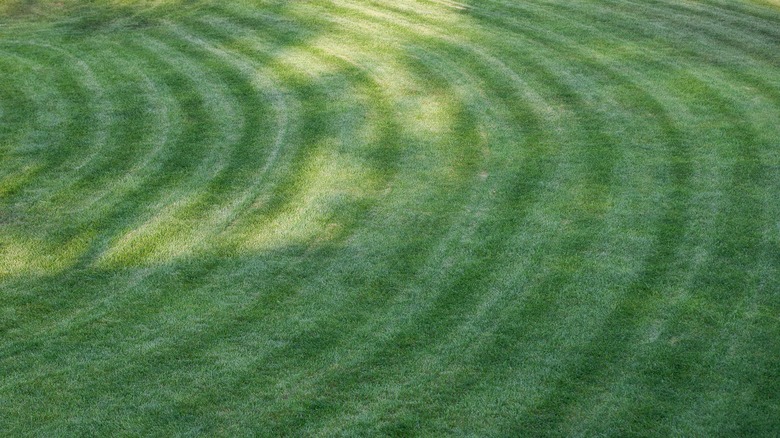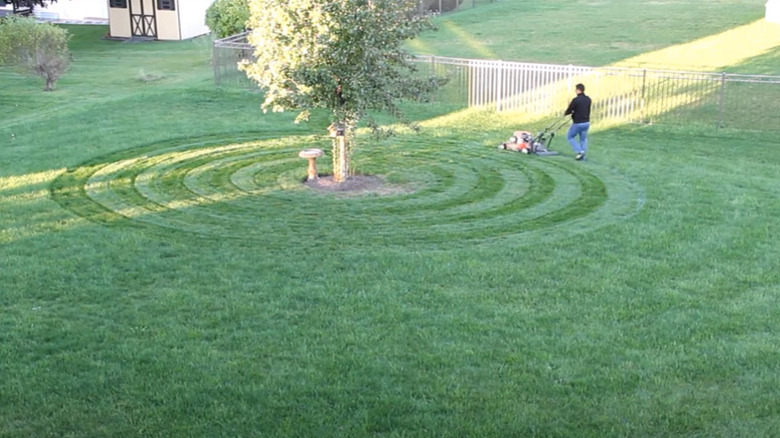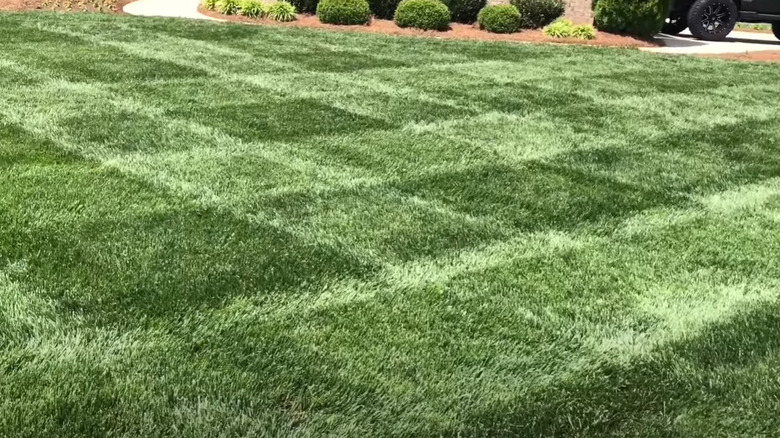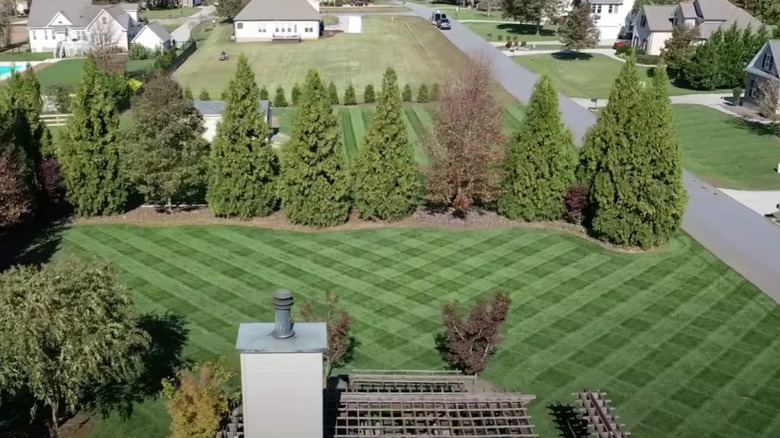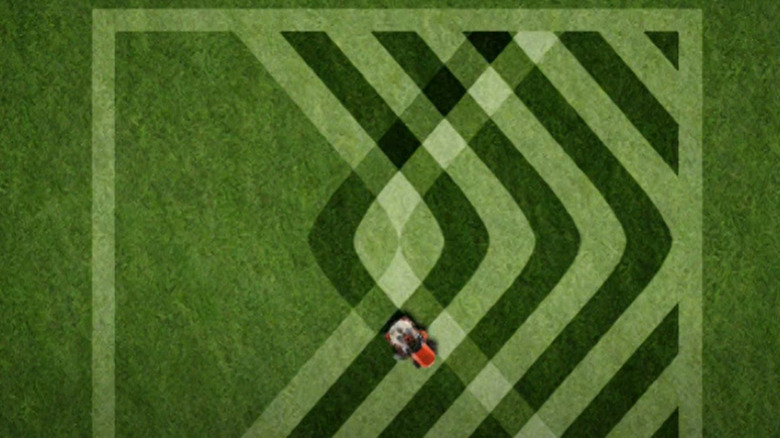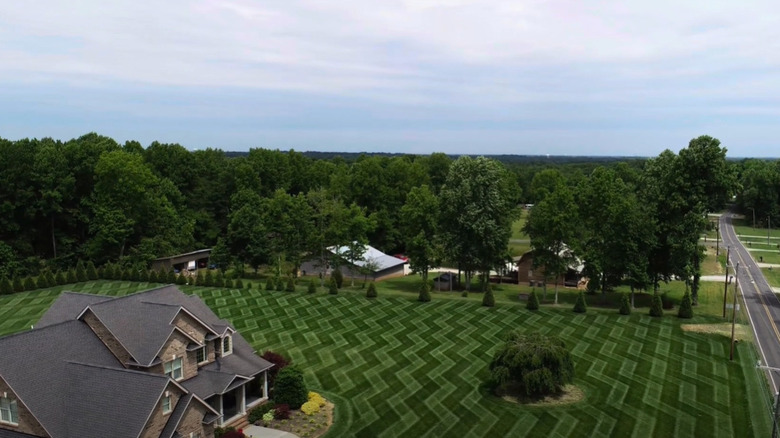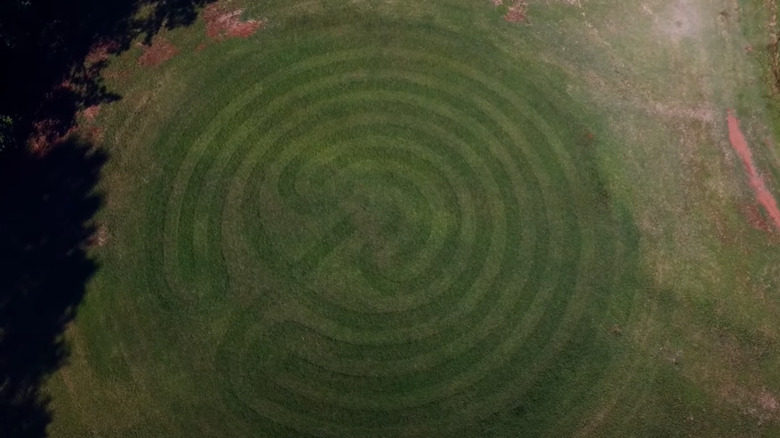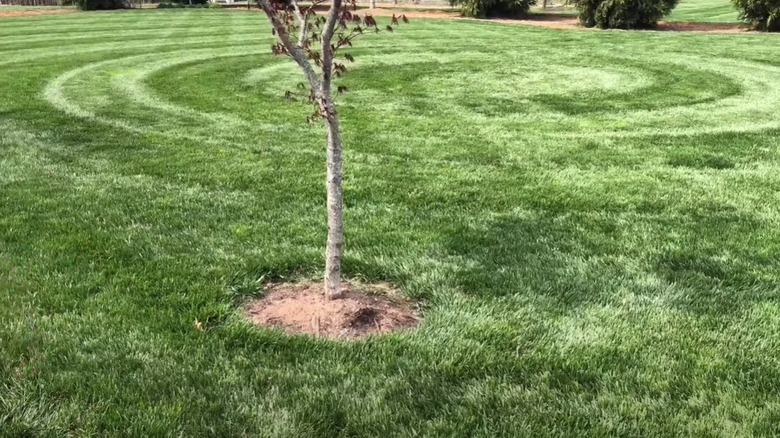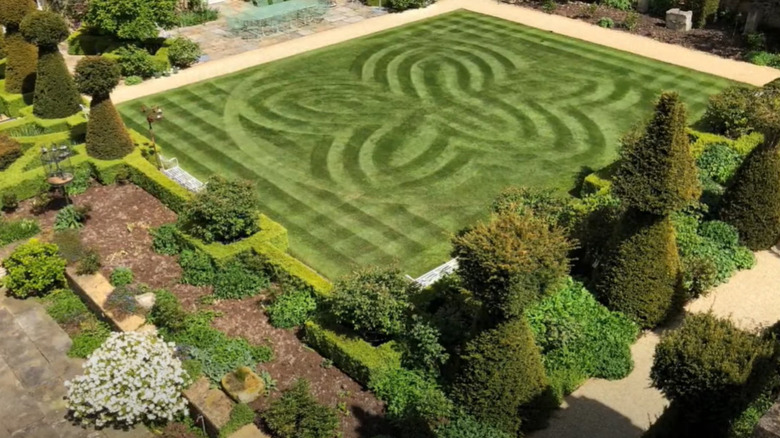Popular Mowing Patterns You Should Try Out On Your Lawn
We may receive a commission on purchases made from links.
Who says you can't have a bit of fun when keeping your garden trimmed and tidy? You see, traditional lawn mowing follows the simple thumb rule of maintaining neatness and regularity. Yet, beneath that simplicity, a canvas of creative lawn mowing patterns can unfurl under your guidance, from stripes, circles, diamonds, and zigzags to checkerboard designs. Picture your yard transforming into a conversation starter in your neighborhood.
The secret in darker and lighter shades in most of these lawn-mowing patterns lies in the interplay between natural illumination and bent grass blades. As light diffuses off the grass, blades bending towards you will appear darker, while those bending away cast a lighter tone due to the larger surface reflecting the sunlight. However, the intensity of contrast in your pattern rides heavily on the length of your grass blade. Longer blades bend more, increasing the reflecting surface area to amplify the pattern's effect, while shorter blades do the exact opposite.
For uniform cuts and amplified patterns, keep the mowing speed steady, and don't skimp on sharpening your mower's blades. In addition, consider installing a lawn stripper kit, such as the Toro Lawn Striping System from Amazon. Its weighted cylinder ensures the grass blades bend further for an intensified effect. But remember, not all grass types interact favorably with mowing patterns. For instance, warm-season grasses bend less, thus creating less conspicuous patterns.
Stripes
If pristine aesthetics is what you aim for, stripes should be your go-to choice amongst the best lawn mowing patterns. This design's essence lies in its simplicity. To achieve this pattern, start mowing in a straight line from one end of your lawn to the other, beginning at the perimeter. When you reach the end, make a U-turn and mow a parallel line going in the opposite direction. Rinse and repeat until the entire lawn is striped. You could run a lawn roller in the direction of mowing, bending the grass blades further for the best visual effect.
Curves
Daring to break the conventions of linear patterns? Consider smooth waves, whose charm boils down to the rhythmic flow of curved lines with beautiful contrast across the lawn. Creating waves essentially requires you first to make a stripe across the middle of your lawn. With the base established, mowing with slight curves at regular intervals. Overlapping slightly with the previous pass will ensure an even cut. Remember to keep the curve size consistent to maintain the rhythm. A final clean cut along the lawn's perimeter creates a neat edge that accentuates your design.
Circles
For the circular pattern, begin by marking the center of your lawn using a stake. Then, tie a rope or string around the marker and stretch it out to the desired radius. This will be your guide for mowing your first circular path at the center of your lawn. Starting from this initial circle, mow outward in a clockwise or counterclockwise direction until you cover the target lawn patch with circles. Here's where pattern reuse comes in handy. Mowing in alternating directions will create alternating lighter and darker shades synonymous with the lawn striping concept.
Checkerboards
Why not touch up your garden with the checkerboard or plaid lawn pattern? Imagine your lawn looking like a traditional English garden party is about to happen. The essence of the checkerboard lawn mowing pattern lies in striking parallel stripes into your yard, then mowing over them but in a path perpendicular direction. Follow a contrasting direction on each pass, overlapping the preceding stripe slightly for neat, even lines. Thus far, you should get an impressive display of light and dark squares akin to a checkerboard. Finally, mow around the perimeter once more for a polished finish.
Diamond pattern
Whether a sprinkle of sophistication is your desire or you're looking to reduce lawn damage, the diamond or crisscross lawn mowing technique could be your calling. Diamond or crisscross patterns are essentially the runway models of the lawn patterns — chic, mesmerizing, and always in vogue. Similar to the checkerboard pattern, the crisscross pattern also requires mowing in two different directions but with a slight twist — more angles. To achieve this design, start by creating diagonal stripes across your lawn, then repeat the process in the opposite direction. Always kick off the diagonals at your lawn's hypotenuse.
Arches
Is an unconventional lawn-mowing pattern what you seek? Lawn arches could be your answer. Start by choosing a spot on the longer edge of your lawn, ideally around one-third of the length from the corner. Guide your lawn mower in a straight line towards the center of your lawn, then gracefully curve into a wide arch that takes you to the opposite edge. Duplicate this blueprint arch, creating a series of curved stripes echoing outwards until you traverse the entire breadth of your lawn. On the half that you've just striped, initiate another arch in the opposite direction.
Zigzag pattern
Picture the Zigzag lawn mowing pattern as the embodiment of elegant complexity. Contrary to the linear or straight paths, here you mow your lawn in alternating diagonal patterns. To attain this intricate design, crisscross the lawn with thrilling precision, making diagonal 'stripe pairs' that twine in opposite directions. The outcome of duplicating the base zigzag stripe is a delightful pattern that offers visual complexity and dynamism. Enclose the pattern with a well-trimmed perimeter. This pattern calls for a lawnmower that can make sharp turns and preferably has a lawn roller attachment.
Labyrinth pattern
As its name implies, the labyrinth mowing pattern best suits gardeners thirsting for more thrill in lawn care. Begin by sketching your dream labyrinth on paper, then mark the design on your lawn using wooden stakes, string, or chalk. The pathways should be wide enough for your lawn to maneuver. Next, start mowing along the labyrinth's perimeter, working your way inwards. As you create the internal pathways, take care to maintain the corners and turns nicely curved. Bonus tip: you could vary your mower's height for an enchanting 3D effect. Conclude by removing the stakes and strings.
Circles and lines
This lawn-mowing pattern blends horizontal or vertical striping with the subtlety of circular motifs. Start with a circular pattern, preferably at the central point. Then, mow around the stake and follow up the circles with traditional stripe-mowing in the direction of your choice. Remember to alternate your directions when mowing both the circles and stripes for a visually appealing result. Again, keep the mowing speed consistent to keep the length of the cut grass uniform; otherwise, there might be noticeable inconsistencies in the pattern.
Zen garden pattern
for a Zen garden lawn mowing pattern, begin by designing the pattern on a piece of paper, or graphic design software. Next, use a rope or landscaping spray paint to outline the pattern of sweeping, fluid curves and winding paths that embody the tranquil essence of a traditional Zen garden. These curves should effortlessly wind around the focal point and loop back towards themselves, resembling a stylized figure-eight or an infinity symbol (∞). Finally, mow the outlined curves, gradually progressing from the outside edges. Watch in awe as the pattern unfurls under your guidance.
Unleash your inner artist
How about channeling your inner artist to transform your yard into a testament that becomes the talk of your neighborhood? First, sketch out a rough blueprint — this will be your guide as you tailor your pattern to your tastes and style. Feel free to blend geometric shapes, curves, and lines. Done with the design stage, awaken your lawn mower and embark on transforming your vision into a tangible reality. Experiment with different grass lengths and mowing directions for striking contrasts, and once in a while, step back and reassess your creation.


